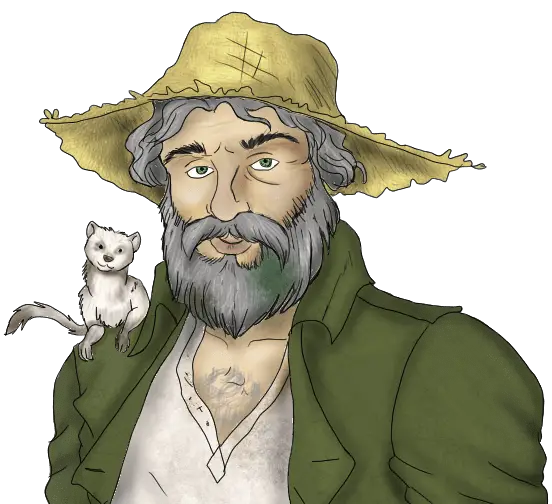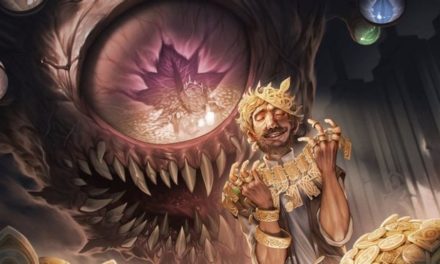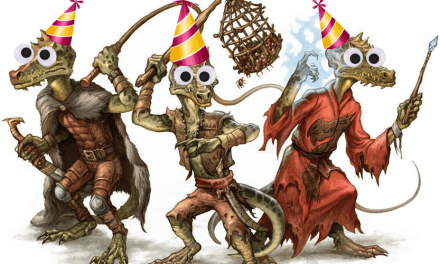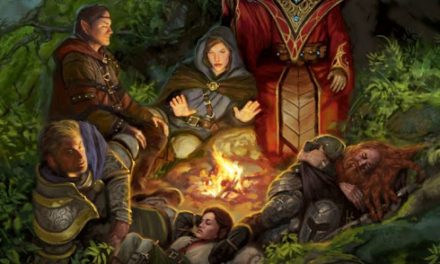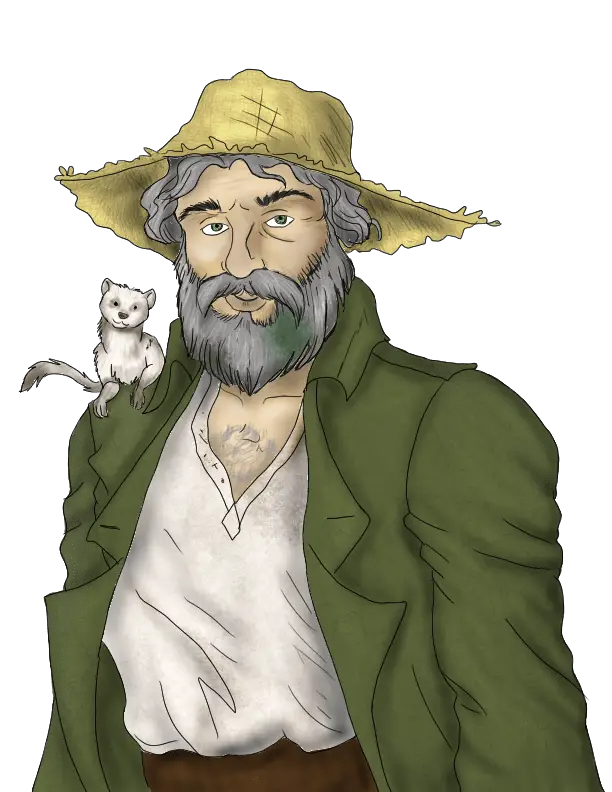When you think of tips to help you write better or run more immersive D&D games, South Park probably isn’t the first thing to come to mind.
I mean, why is it worth studying the storytelling of four foul-mouthed third-graders in Colorado?
Wouldn’t it make more sense to look into the techniques of literary giants like J.R.R. Tolkien, Ernest Hemingway, or Charles Dickens?
Whether you’re a fan of South Park, you have to give it to Matt Stone and Trey Parker. South Park has been on the air for 25 years and has shown no signs of slowing down. Unlike other shows that grow stale over time, South Park has managed to remain topical and (most importantly) engaging.
Meanwhile, catchphrases like “Respect my authoritah!” and “Oh my god! They killed Kenny!” have been immortalized in pop culture.
While there are many reasons behind the show’s success, one factor silently stands taller than all the rest: how South Park tells stories.
Strip away the funny voices, hilarious characters, and bizarre plots and you’ll find a writing method that every DM should note.
It doesn’t matter what type of campaign you’re running or what setting it’s in. It’s that powerful!
This is the most important lesson that every Dungeon Master should learn from South Park!
Story Beats and Tempo
Before we get into the lesson and technique itself, it is important to set some definitions and reasoning.
We’re getting into some of the technical theory behind writing and storytelling here, so I think it’s important to make sure we’re on the same page first!
When you’re looking at a typical D&D adventure, it’s very similar to looking closer at what makes a TV show or a movie work.
Unlike a TV show or movie, you are not a director and can’t necessarily control what your players (“actors”) will do. However, you are still able to lay out a story that they can engage with.
The story is largely laid out in the form of plots points or “beats” that you have likely planned for. A beat could be an encounter with a Green Dragon or it could be negotiating passage through an Elven forest.
Beats are best described in this case as “things happening with the party at the focal point.”
Next, we have the story’s pacing or tempo.
In other words, how fast are these things happening in sequence?
If it’s too fast, the party will get overwhelmed and nothing will seem important or stand out. If it’s too slow, the party will be bored to tears between (and probably even during) beats.
You want to apply the Goldilocks principle here: it should be “just right.”
But here’s the irony: while you as the DM are planning plot points, what the players are most engaging with is what happens between those points.
Also Check Out: The ONE Question To Make Better Characters!
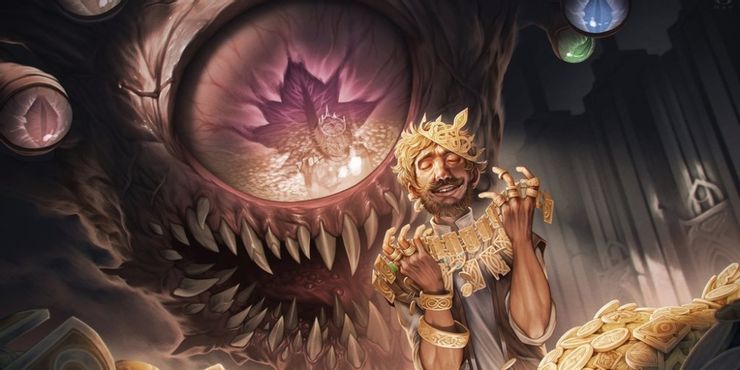
Bridging Story Beats
To wax poetic for a moment, I typically describe the actual story beats as the “black and white” of the story. They’re clear moments that occur as a way to signify that the story has advanced.
Using that same terminology, what most players typically engage with is the “gray areas” between those points.
They didn’t just arrive in the grand bazaar of the magnificent desert city. They were greeted by the sights, sounds, smells, and more of the marketplace.
“The smell of rich frankincense fills the air around the perfume vendor offering free samples. Meanwhile, the applause of a crowd gathered around the sword-swallowing street performer roars above the other sounds of bustling commerce.”
Your plot points might have been “arrive in city, get an audience with the Merchant Prince, get quest.” But the party wants to engage with the world.
Some DMs might get infuriated by this and scream “just go to the Merchant Prince’s palace!”
But not you!
You see it’s exactly this kind of “gray area” that lets us build exciting and engaging bridges between the story beats. It keeps players engaged while also letting us as DMs take control of the story’s tempo to keep that Goldilocks balance.
It’s these bridges between story beats where the real power of the South Park writing technique shines!
Though before we get into that, I do also want to mention that these bridges are also exactly where you can lay out themes and motifs within your overall story. Done well, your players will be blown away at how clever you are!
Combined with this article’s advice, it makes for an excellent one-two punch!
You can check out my article all about how to do that here!
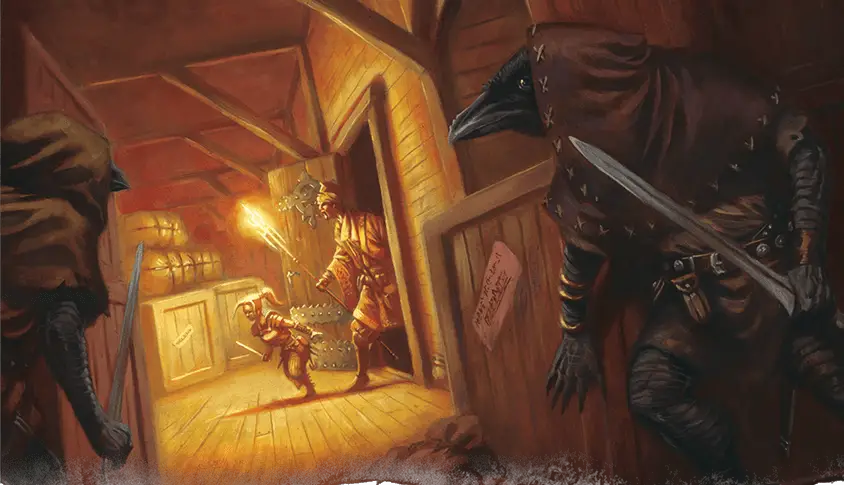
The Problem With “And Then” Storytelling
Now that we’ve got the structure and definitions laid out, let’s dive into what this whole idea is about.
The problem that I have seen with countless D&D adventures (some homebrew and even some officially published ones!) is that they practice “and then” storytelling.
It’s hard to express how much of a no-no this is.
Don’t get me wrong, I understand what causes it. In most cases, it’s because the writer is focusing so heavily on the story’s beats that they lose sight of how powerful those bridges are.
When that happens, the tempo begins to rapidly change. This means players and DMs alike are left with tons of questions and the adventure can come to a grinding halt.
Understandable as the mistake might be, it’s still sloppy and boring.
“And then” storytelling is when between each story beat you could just have the words “and then” without losing anything.
Let me show you what I mean…
Recommended: The 6 Best Books That Every DM Needs To Read!
An Example of “And Then” Storytelling
Here’s what you want to NOT do.
- The party wandered through the desert. And then…
- They found the hidden desert city they were looking for. And then…
- They went to the Prince’s palace. And then…
- The Prince greeted them. And then…
- He gave them a quest to find an ancient artifact. And then…
- The party had to find a guide before going back into the desert. And then…
Ok, you get the point… Isn’t that boring?
Instead of a gripping adventure into a hidden desert city, it reads more like a grocery list!
And this doesn’t just apply to more story-focused parts of your adventures, by the way. Even a standard dungeon crawl that’s all about “slay monsters, get treasure” can become maddeningly boring if it’s run in an “and then” style.
- The party finds the ancient tomb. And then…
- They solve the puzzle to open the doors. And then…
- Four mummies attack them. And then…
- They have to escape a poison trap. And then…
Rinse and repeat with various encounters, traps, and puzzles until the party fights the boss AND THEN claims the artifact AND THEN brings it back to the Prince AND THEN…
Ok, I’ll stop now. I promise.
But do you see how the words “and then” spoken/written or not just seem to suck the drama out of each moment?
Now, this isn’t a principle that many (if any at all) players at your table (or even DMs for that matter) will consciously be aware of. However, they will feel the effects of “and then” storytelling.
Making a conscious effort to avoid “and then” between story beats is how South Park stays engaging. The exact same is possible at the D&D table!
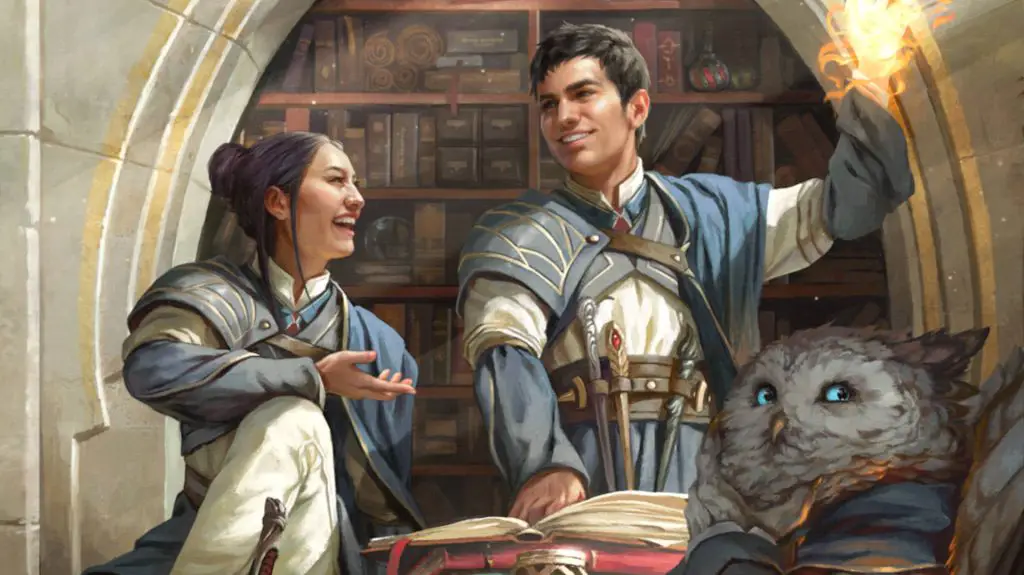
The Rule of “But” and “Therefore”
Now, we’re not just going to go over an issue without explaining how to fix it.
The real magic behind South Park’s writing is that Stone, Parker, and their team remove every instance of “and then” in their writing process. Instead, they substitute “and then” with either “but” or “therefore.”
Using “But”
When you put “but” after a beat, you’re creating a complication. This is something that the party can directly interact with as the complication spurs them to action.
- The party wandered through the desert but was beginning to run out of water.
- They stumbled upon a hidden city but did not speak the language or know the culture.
- They went to the Prince’s palace but were turned away since they didn’t have an appointment.
- The party got a meeting with the Prince but he would not help them for free.
- He could help them get home but wanted them to recover a sacred artifact for him first.
- The party would have to traverse the desert again but first needed to hire a guide.
Do you see how each “but” is prompting some kind of action or reaction from the party?
Running out of resources, not speaking the city’s language, and not being able to get an audience with the Prince are all situations that create drama, action, and opportunities for the players to engage beyond the specific plot points.
Using “Therefore”
The magic of “therefore” is that it reinforces cause and effect in the adventure. It’s the surest sign of a living, breathing world that the party is directly able to impact.
- The Cleric’s holy symbol resembled an ancient religion of the city therefore the party was able to meet a helpful elder at a local temple.
- A beggar on the street that the party gave money to was actually the Prince in disguise. Therefore, he was happy to meet these kind strangers.
- The Prince would like to help the party get home but currently does not have the influence necessary to do so. Therefore, he needs the party to recover an ancient relic for him so that he can gain the influence needed to help them.
You can even substitute “therefore” into some of the examples I mentioned in the previous section.
“Therefore” doesn’t necessarily have to be rooted in decisions that the party members have made, but that’s when it’s at its best.
“The party did X, THEREFORE Y is happening.”
If it’s a case where the cause isn’t the players’ choices, make sure to reinforce what the cause and effect of the “therefore” are.
“The merchant owes a large amount of money to a local gang. Therefore, he cannot afford to give any discounts.”
When you’re using “but” and “therefore”, you’re creating conflict, complications, and drama that moves the story forward. It helps you have more actually going on and reinforces the point of what’s even happening in the story.
You Might Like: 9 Powerful Tips to Engage Your Players
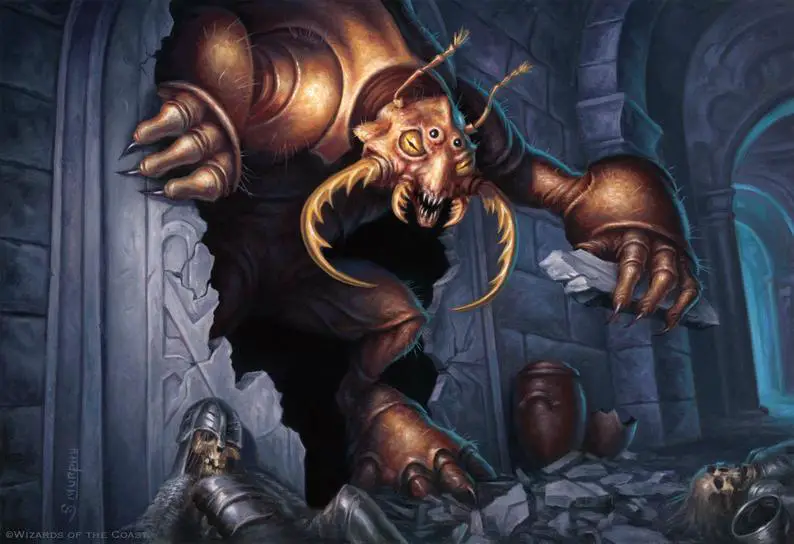
An Example of “But” and “Therefore” Storytelling
So, let’s put this all together now. We’ll build off of an example of “and then” storytelling we went over earlier in this article, but now we’re going to use “but” and “therefore” instead.
(See what I did there?)
- The party wandered through the desert but were running out of water and risking dehydration. Therefore, they were happy to pay a traveler to escort them to the city.
- They arrived in the city but did not speak the language or understand the culture. Therefore, they had a difficult time finding someone who could help them with their quest.
- Seeing the Prince’s palace, they decide to go there and request help. But the Prince does not see anyone without an appointment. Therefore, the party must get an audience with the prince some other way or find someone else to help them.
- A new friend in the temple helps the party get an appointment with the Prince, but the Prince needs the party’s help first before he can assist them. Therefore, the party agrees to investigate an ancient tomb to recover an ancient relic for him.
- But they will need to hire a guide if they want to survive the desert. Therefore, they have to meet their potential guides and decide which one to hire.
See how there’s more drama, meaning, and “life” there?
This also works when you’re designing or running a dungeon, though it might not be quite as explicit.
If you look to keep up a one-two punch of “but” and “therefore” in your dungeons, you’ll create a truly memorable experience for everyone at the table.
Not to mention, you’ll also be surprised at what kind of devilish complications you come up with that you might not have considered otherwise!
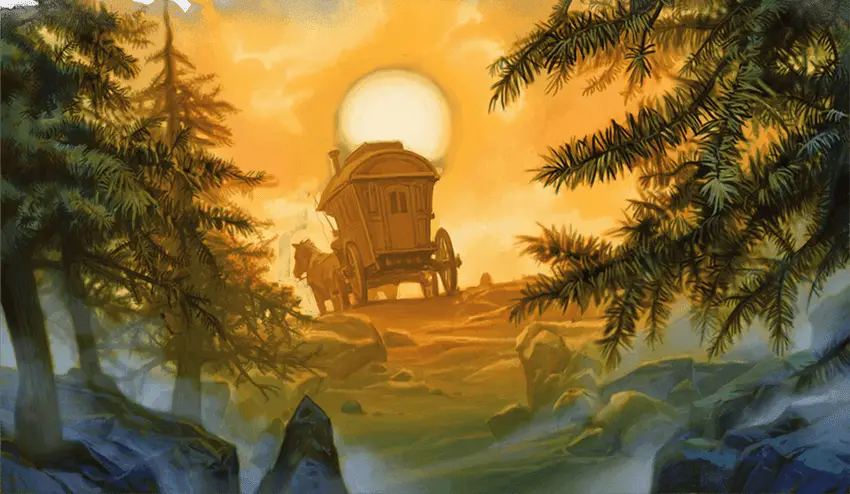
The Benefits of Using More “But” and “Therefore”
Conflict and Cause/Effect are essential to moving a story forward in an engaging way. It’s no different at the D&D table!
Because the writers of South Park understand the power of these two words, they’ve been able to have the show run for 25 seasons without losing relevance. Each episode is an escalation in story-telling as the boys (and us as the audience) continue to “leap-frog” to more and more crazy situations!
It’s definitely worth taking notes on!
When you take time to look at the beats of an adventure and look for ways to add these little flourishes, you will make a great experience for your players. The action is centered on them and they can see how their choices and actions matter.
These two words will help you run more engaging sessions with more ways for your players to experience your world. Instead of performing a series of tasks, they will truly feel that they are embodying their characters and having an effect on the world.
This ultimately builds upon all three pillars of the D&D experience: exploration, social interaction, and combat.
Even if you’re running a pre-written adventure, “but” and “therefore” can help you really build on it as a guideline.
By the way, if you want some help running published adventures, I’ve got you covered!
Honestly, I think I could write an entire article about how to make choices matter, so let me know in the comments if that’s something you’d like to see.
Recommended: Your Game Won’t Be Like Critical Role (and That’s Good!)
Conclusion – What Every Dungeon Master Can Learn From South Park
I hope you’ve found this article helpful. It’s a technique that I’ve been using for some time now that really brought my games to life.
Almost immediately upon looking for ways to include “but” and “therefore” more, the entire group began really engaging with the adventure in a way that I haven’t seen them do before.
If you want a good adventure with plenty of beats and ways to practice this, I’d recommend checking out my review of Waterdeep: Dragon Heist. As a shorter, intrigue-focused adventure it makes for a great way to practice this technique!
Want more DM tips, player guides, news, reviews and more for D&D 5e? Sign up for the Tabletop Joab newsletter below!
You can also follow me on Facebook and Twitter.
If you found this article helpful and want to support the site, you can buy me a coffee here! (It’s not expected, but very appreciated!)


